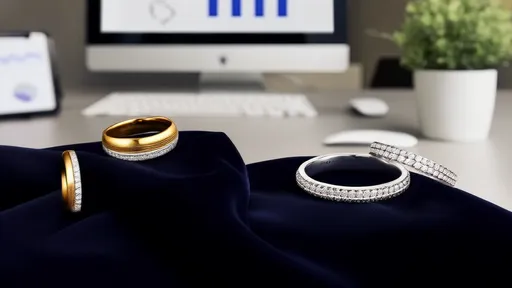In recent years, the Western market has witnessed a profound shift in consumer behavior and corporate strategy, with sustainability emerging as a central pillar of modern commerce. Among the various facets of this green revolution, the adoption of eco-friendly materials has transitioned from a niche preference to an absolute necessity. This transformation is not merely a trend but a fundamental re-evaluation of how products are made, consumed, and disposed of, driven by a confluence of regulatory, economic, and social factors.
The regulatory landscape in Europe and North America has become increasingly stringent, pushing businesses toward sustainable practices. Governments are implementing policies that penalize pollution and reward environmental responsibility. For instance, the European Union's Circular Economy Action Plan and extended producer responsibility laws mandate that companies take accountability for the entire lifecycle of their products, including waste management. These regulations make the use of recyclable, biodegradable, or renewable materials not just advisable but imperative for market access and compliance. Failure to adapt can result in hefty fines, legal challenges, and exclusion from key markets, thereby making eco-friendly materials a strategic imperative rather than an optional upgrade.
Beyond compliance, economic incentives are powerfully aligning with ecological goals. The rising cost of virgin resources, coupled with volatility in supply chains for traditional materials like plastics and metals, has made sustainable alternatives more financially attractive. Investing in materials such as bamboo, recycled plastics, organic cotton, or mycelium-based composites can lead to long-term savings and stability. Moreover, as recycling technologies advance and scale, the cost of producing and sourcing eco-friendly materials continues to decrease, enhancing their viability for mass-market applications. Companies are discovering that sustainability can be a driver of efficiency and innovation, reducing waste and energy consumption while opening up new revenue streams through green products and services.
Consumer demand is another critical force propelling this change. Today's shoppers, particularly millennials and Gen Z, are more informed and conscientious than ever before. They scrutinize product labels, research brand ethics, and are willing to pay a premium for items that align with their values. A recent survey revealed that over 60% of consumers in the U.S. and EU prefer to buy from companies committed to environmental sustainability. This shift in purchasing behavior is compelling brands to integrate eco-friendly materials into their offerings to maintain relevance and competitiveness. It is no longer enough to have a great product; consumers expect that product to be made responsibly, with minimal harm to the planet.
Corporate image and brand reputation have also become inextricably linked to environmental stewardship. In the age of social media and instant information, companies are held accountable for their ecological footprint. Scandals related to pollution, waste, or unethical sourcing can inflict lasting damage on a brand's image and erode consumer trust. Conversely, brands that champion sustainability often enjoy enhanced loyalty and positive publicity. By adopting eco-friendly materials, companies not only mitigate risks but also position themselves as leaders in the global movement toward a greener economy. This proactive approach can attract investors, partners, and top talent who prioritize sustainability in their decision-making.
The technological advancements in material science are accelerating this transition. Innovations are making sustainable materials more durable, versatile, and cost-effective. For example, developments in bioplastics derived from algae or agricultural waste offer alternatives that decompose naturally without leaving toxic residues. Similarly, advances in recycling processes allow for the creation of high-quality materials from post-consumer waste, reducing reliance on virgin resources. These breakthroughs are dismantling the old notion that eco-friendly means inferior or expensive, enabling industries from fashion to automotive to integrate sustainability without compromising on quality or performance.
Looking ahead, the momentum behind eco-friendly materials shows no signs of slowing. As climate change concerns intensify and resource scarcity becomes more pressing, the Western market will likely see even greater integration of sustainable practices. The businesses that thrive will be those that view eco-friendly materials not as a burden but as an opportunity—to innovate, to connect with consumers, and to build a resilient, future-proof enterprise. In this evolving landscape, sustainability is no longer a choice; it is the new standard for success.

By /Sep 17, 2025

By /Sep 17, 2025

By /Sep 17, 2025

By /Sep 17, 2025

By /Sep 17, 2025

By /Sep 17, 2025

By /Sep 17, 2025

By /Sep 17, 2025

By /Sep 17, 2025

By /Sep 17, 2025

By /Sep 17, 2025

By /Sep 17, 2025

By /Sep 17, 2025

By /Sep 17, 2025

By /Sep 17, 2025

By /Sep 17, 2025

By /Sep 17, 2025

By /Sep 17, 2025

By /Sep 17, 2025

By /Sep 17, 2025